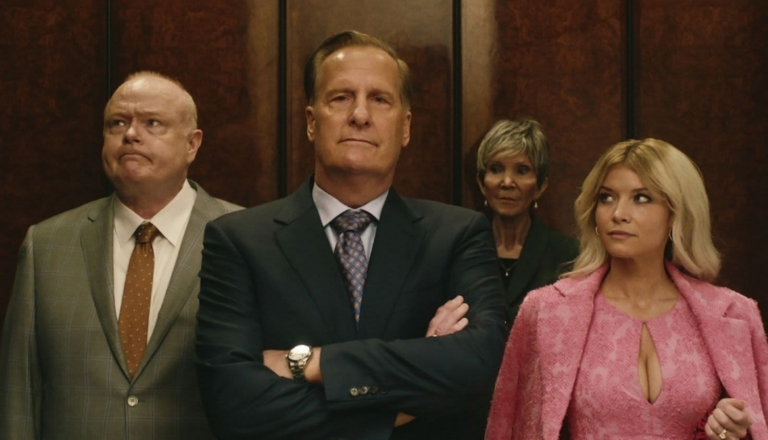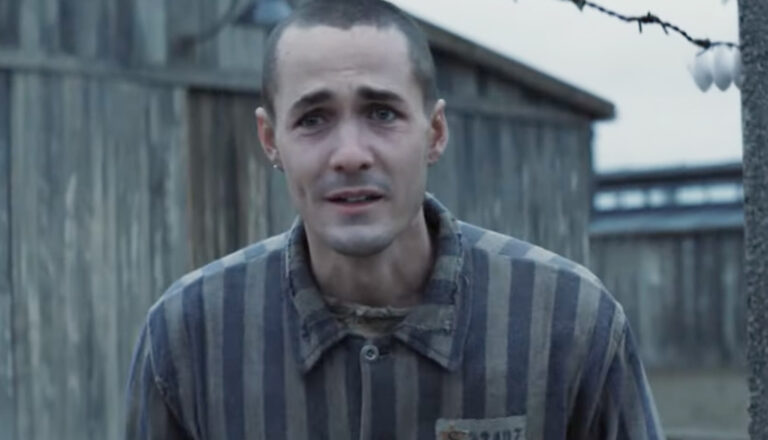
A Man in Full
Talent and intrigue ultimately can’t cloak the truth about this vulgar, crass and graphic drama on Netflix.

You don’t need to know fashion to know at least two of its most fashionable names: Christian Dior and Coco Chanel.
In the years before World War II, Chanel redefined women’s fashion and cemented Paris as the industry’s epicenter. After the war, Dior swept aside Chanel’s pragmatic chic with what was hailed as a “New Look,” which gloried in tiny waists, full skirts and curve-accentuating cuts.
But what of the war itself? How did these two Parisian icons spend their days—and nights—when the City of Lights was Nazi occupied?
One might not think that fashion could be a crucible for ethics—that to design a dress might be a political, or even moral, statement.
But in 1943 Paris, it very well could be.
Back then, in mid-war France, Christian Dior was a self-described “nobody,” a designer working for fashion kingpin Lucien Lelong. Fashion wasn’t exactly in fashion then, either. Why, the only people who could afford a fancy dress were Nazi wives, girlfriends and a handful of collaborators.
But someone had to keep those folks in couture for their endless parades of balls and dinner parties. And Lelong—as much as he disliked doing so—swallowed hard and kept his business open.
He never told Christian and the other designers whom their customers were. But they knew. Certainly, they knew. So Christian made good money and kept his mouth shut.
And how did he spend that money? For a time, he gave much of it to his sister, Catherine, for her work in the French resistance until she was captured by the Nazis. His plush apartment even served as a safehouse for Parisian freedom fighters sometimes.
Meanwhile, Coco refused to keep her 4,000-employee company open during the war, shutting its doors in 1939. She allegedly screamed when she heard the Nazis were marching toward Paris, and no new dresses of her design ever touched Nazi skin.
But by 1943, France’s foremost fashionista hit difficult times. Well, difficult by her standards, at least. Sure, she still lived in the Ritz, Paris’ most elegant hotel. She still boasted rich and powerful friends. But her own business had fallen into enemy hands—the hands of two Jewish business partners who had, apparently, locked her out of her own company’s accounts.
Perhaps she found the Nazis … disagreeable. But their Aryan laws—where Jews were not allowed to own anything—certainly held an attraction to Coco. But what did the Nazis want in return?
In the opening episode, another designer named Cristóbal Balenciaga tells Christian that his own firm will have nothing to do with the Nazis, and he questions Christian’s own apparent moral compromises. “Will you be able to live with what you have done?” he asks. “Our choices, believe me, they matter.”
And yes, those words are true enough. The New Look offers a compelling look at those choices—and forces viewers to consider what an ethical choice might’ve looked like in those fraught, dangerous days. Yes, this is certainly a story about fashion. But it’s a war story, too—and, perhaps, even an examination of human character.
But, as someone working for Plugged In, I’d argue that our entertainment choices matter, too.
Certainly, tuning in to a questionable TV show isn’t nearly as problematic as collaborating with the Nazis. But perhaps it’s not as dissimilar as we might imagine. When we see Coco at a Nazi party, smiling and drinking, we feel the moral compromise involved with just her being there. Her smiles may be forced then, but as the evening wears on, she’s drawn closer to the German cause—lured by its beauty and luxury and ease.
This show is, in many ways, a beautiful, luxurious thing as well—a glamorous, well-acted story that, about 90% of the time, steers clear of problematic content.
That makes its departures into that problematic content all the more frustrating.
The real Christian Dior never married, and many assume that the designer was gay. The New Look does, too, and it shows its own version of Christian in romantic relationships—kissing and cuddling his male partners at times (even as the show concentrates far more on Christian’s relationship with his work).
Male-female relationships are part of this show’s stitching, too, and most wind up in bed. While nudity is rare, we do see flashes of intimate body parts. Likewise, language can be frustratingly crude. In the first episode, nearly every bit of dialogue we hear would be fit to print—except for a sole f-word, which spoils the whole pudding. Christian was also deeply superstitious, too, and we see him dabble in the occult.
The New Look has its merits. And given that I know as much about fashion as your average turnip, I was surprised how interesting this Apple TV+ show was. But unfortunately, The New Look comes with some very old problems as well.
It’s 1955, and Christian Dior is speaking to students at Paris’ famous Sorbonne University—the same day that Coco Chanel has returned to Paris to relaunch her long-shuttered business and “save” haute couture from the likes of Christian. When a student asks Christian about his decision to make dresses for Nazis and their sympathizers during World War II, Christian says that it’s true he did so. But he adds, “There is the truth. But there is always another truth that lives behind it.”
The rest of the episode flashes back to 1943 and deals with both Christian’s and Coco’s dealings with the occupying Nazis.
Christian’s sister, Catherine, works with the French resistance movement, and she serves as bait for a trap: She walks up to a pair of Nazi guards without her necessary paperwork. They insinuate that, if she has sex with one or both of them, they’ll let her go free. She flees, leading them into an apparently abandoned alley. And as one guard prepares to rape Catherine, Catherine’s colleagues shoot and kill both Nazis. The three resistors then hide in Christian’s opulent apartment.
It’s not the only instance of violence we see. Several people are rounded up by the Nazis: One man is repeatedly kicked before being taken away. Later, he and several others are tortured (with their bleeding heads pushed into a bucket of water) before being tied to poles and shot. Another man is threatened by a Nazi commander before being let go. Someone is snatched off the streets by the Nazis—the abduction largely taking place off camera.
Catherine is seen in bed with her boyfriend, both apparently naked. Later, we see Catherine partly rise from the bed, and part of her breast is visible. Christian—a gay man—is kissed by his apparent boyfriend as the two walk through the dark Parisian streets. (Christian roughly pushes him away, his mind on other things.) Coco Chanel kisses and sleeps with an unlikely paramour.
In 1955, a medium reads Christian’s fortune via Tarot cards. When a card signifying death turns over, Christian nearly refuses to speak to the students at the Sorbonne. His assistant scolds the medium: “Madame, we agreed no more divination today,” she says. “You were to depart after bringing Monsieur his lucky amulets.”
In the 1943 flashback, Christian and Catherine offer flowers and prayers to their dead mother. We hear that Christian had his fortune told when he was 14—with the fortune teller saying that Christian would “one day bring great pleasure to women.” (Catherine, referencing Christian’s sexual leanings, said she and her family laughed heartily at the prediction at the time.)
We hear Nazis talk about and plot against the Jewish people, with a high-ranking Nazi (Heinrich Himmler) unpacking how they plan to disenfranchise and ultimately “exterminate” the Jews. “We must first eliminate any sense of belonging that they might have,” Himmler says. “And we do that by depriving them of what they own. It can be their art, it can be their homes, for example. … Can you guess what’s next? Their dignity, their hope, their souls.”
Shortly thereafter, a Nazi official takes someone “shopping” through a lavish apartment apparently taken from a Jewish family. “Any items that you like will be yours,” he tells his guest, and soon, greed gets the better of that guest.
People drink wine and champagne. Characters smoke. A man begs Christian to be allowed to cut in front of him in a food line. (Christian refuses, telling him that he’s feeding other people, as well.)


Paul Asay has been part of the Plugged In staff since 2007, watching and reviewing roughly 15 quintillion movies and television shows. He’s written for a number of other publications, too, including Time, The Washington Post and Christianity Today. The author of several books, Paul loves to find spirituality in unexpected places, including popular entertainment, and he loves all things superhero. His vices include James Bond films, Mountain Dew and terrible B-grade movies. He’s married, has two children and a neurotic dog, runs marathons on occasion and hopes to someday own his own tuxedo. Feel free to follow him on Twitter @AsayPaul.

Talent and intrigue ultimately can’t cloak the truth about this vulgar, crass and graphic drama on Netflix.

Tales of the Empire is typical Star Wars fare. But in its exploration of what drives folk to the Dark Side, it can get a bit…darker.

The Tattooist of Auschwitz is a little like its titular character. It’s painful. It gets under your skin. And it just might leave a mark.

The Sonic spinoff blends explosive adventure and road-trip-buddy-comedy into a fun romp for both kids and diehard fans.